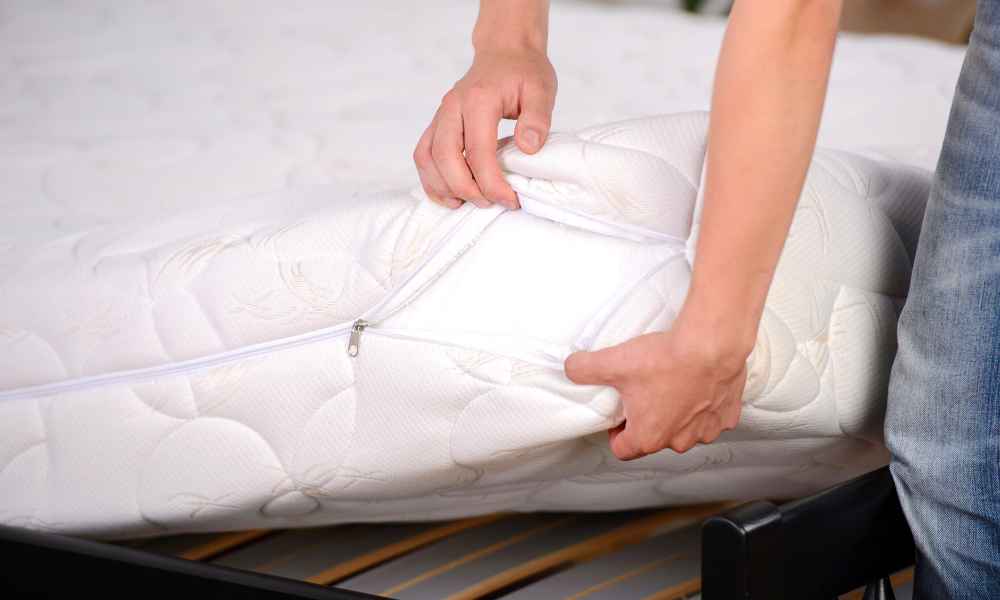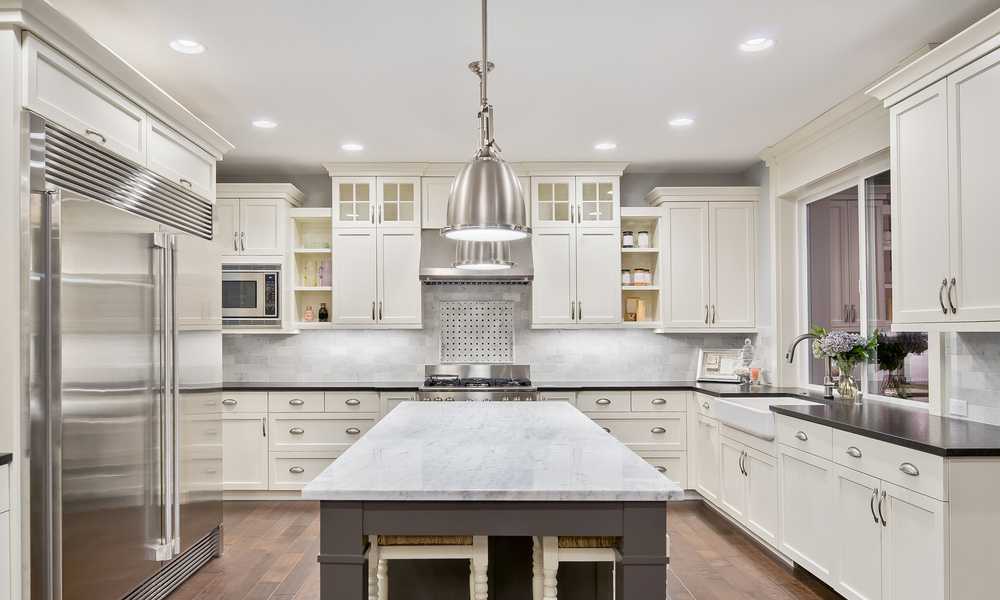Mold can grow in any damp, warm environment, So it’s not unusual for mold to form in kitchens. There are a few ways to remove mold from kitchen cabinets: Using a bleach solution, Using a vacuum cleaner with a HEPA filter, Using boiling water, And using a commercial mold removal product. It’s important to choose the right method for removing the mold and to use it correctly so that you don’t damage the cabinets or your health.
What Is Mold And How Does It Form?
Mold is a type of fungus that can form in any warm and wet environment. Common sources of moisture for mold growth include water damage, humidity, condensation, And leaks. Molds grow best in an environment with a high concentration of organic material (fertilizers, dead plants, animal droppings) and a lack of oxygen. Molds can produce a variety of toxins that can be harmful to humans and animals.
What Are The Signs Of Mold Growth In Your Kitchen Cabinets?

If you notice any of the following signs of mold growth in your kitchen cabinets, It is important to get them checked remove by a professional: Black patches on the cabinet surfaces, strange smells, unusual colors or shapes appearing on food or utensils, Or brown patches that grow in size over time. Mold can cause serious health problems if it grows unchecked, So it is important to take action as soon as possible.
Steps For Cleaning Molds In Kitchen Cabinet
If you notice mold growing in your kitchen cabinets, There are several steps you can take to remove it.
- Use a steamer to heat up water and dish soap in a large pot. Place the cabinet pieces you want to clean inside and steam for 10 minutes.
- Once the cabinet is steamed, use a scrub brush to scrub the surface of the cabinets with hot water and soap. Use gentle strokes, making sure to get into all the nooks and crannies.
- After scrubbing, rinse off the cabinets with cool water and dry them off with a cloth towel.
- If needed, apply an anti-molds spray to the surfaces before drying off again.
Choose a Commercial Cleaner

The kitchen is often one of the most frequented rooms in a home. This is because it is where people gather to eat, cook and relax. Because of this, The kitchen should be kept clean at all times in order to make it hospitable and welcoming. One way to keep the kitchen clean is to use a commercial cleaner. Here are some tips on choosing the best commercial cleaner for your needs:
- Choose a commercial cleaner that is designed specifically for kitchens. Not all cleaners are safe for use in kitchens, So make sure you select one that is certified by a recognized organization such as NSF or CSA.
- Test the cleaner on an inconspicuous area first to make sure it doesn’t cause any damage. Many cleaners contain harsh chemicals which can damage surfaces if not used correctly.
Bleach Solution

Mold can be a serious health hazard, And it’s often difficult to get rid of it without damaging the cabinets. Bleach is one of the most common solutions used to remove molds from kitchen cabinets, But it can be dangerous if not done correctly. Here are some tips for using bleach to clean your kitchen cabinets:
- Test the bleach solution first on a small part of the cabinet that you don’t plan on cleaning. If the bleach solution is too strong, dilute it with water before using it on the entire cabinet.
- Wear gloves when cleaning your cabinets with bleach, And avoid breathing in the fumes produced by the bleach mixture. Use a damp cloth to wet down the area around each knob or handle before scrubbing with a stiff brush. Be sure to rinse all debris away from the surface of the cabinet before letting it dry completely.
Spray Your Cleaning Solution
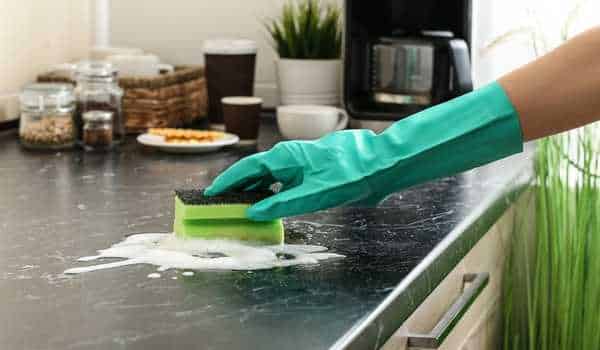
If you notice mold growing on your kitchen cabinets, it’s important to remove them before it spreads. There are a few different ways to do this, And each has its own advantages and disadvantages.
The most common way to remove mold is by using a bleach solution and water. Mix 1 cup of bleach with 3 cups of water, And spray the solution onto the moldy area. Let the mixture sit for 10 minutes, then scrub the area with a brush. Wipe off any excess moisture with a cloth, And let the cabinet dry.
This method is simple and effective, But it can be time-consuming if there are a lot of moldy areas to clean. Another downside is that bleach can damage wood cabinets if used incorrectly, So be sure to follow the instructions carefully.
Warm Water And a Clean Rag

If your kitchen cabinets are looking a little grimy, don’t worry – there’s an easy way to clean them up. All you need is warm water and a clean rag. Here’s how: Fill a sink with lukewarm water and add 1 teaspoon of bleach. Wet the rag and scrub the cabinet surfaces clean with it. Be sure to get into all the nooks and crannies. Once the cabinets are cleaned, dry them off with a towel.
Causes of Mold in Kitchen

Molds can occur in any airtight area, But kitchens are particularly susceptible to the growth of mold because of the high moisture levels and the use of harsh chemicals. Here are some key reasons why mold may grow in your kitchen cabinets:
- Moisture: The high moisture levels in kitchens cause molds to thrive. Bread, milk, And other food products that have been stored in open containers will also contribute to the growth of molds.
- Harsh Chemicals: Many harsh kitchen cleaners contain chemicals that can damage wood and other materials. These chemicals also degrade air quality, making it more conducive to mold growth.
- Condensation: Moisture from the air condenses on cold surfaces such as glass doors and windows, providing an attractive environment for mold to grow.
Leaks Can Make Trouble
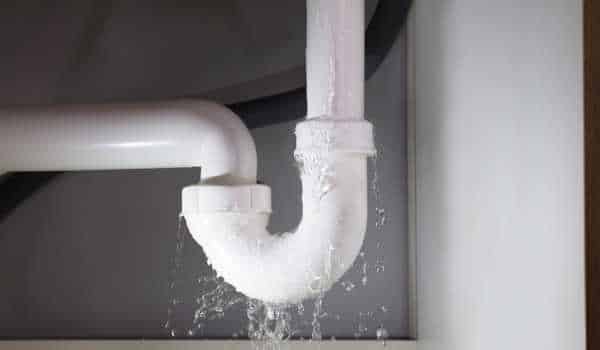
If you have any type of leak in your kitchen, it’s important to take action and remove the molds ASAP. There are a few different ways to do this, And we’ll discuss each one below.
The first way to remove mold is to get a bucket of cold water and pour it over the area where the leak is. This will help stop the growth of molds and make it easier to clean up.
Another way to remove mold is with a vacuum cleaner. Make sure to use the right attachments for the size of the leak and be very careful not to suck up any moisture or debris with the vacuum cleaner.
If using a vacuum cleaner isn’t an option, You can try using a wet/dry vac. Make sure to cover all areas of the leak with water before using the vacuum cleaner so that any excess water doesn’t get sucked up into the machine.
High Humidity Levels

High humidity levels can cause mold to grow in kitchens. If you notice leaks, it’s important to take action to remove the molds and the water. Here are some ways to remove the molds:
- Wipe down surfaces with a bleach solution and water mixture. Avoid using too much bleach, as it can damage surfaces.
- Spray a sealant onto areas where moisture has been leaking, such as around door hinges and air vents.
- Remove any visible molds with a vacuum cleaner and a bucket of hot water.
Garbage Disposal
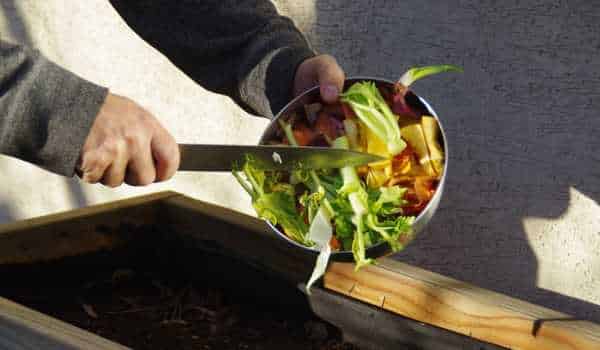
Garbage disposal is an essential appliance in any kitchen. However, If it becomes contaminated with mold, It can be difficult to clean. In this article, We will discuss how to remove mold from garbage disposal units.
The first step is to determine if the mold is located on the outside of the unit or on the inside. If it is on the outside, Use a non-abrasive cleaner and a cloth to scrub the area until the mold is gone. If it is on the inside, use a degreaser and a metal brush to scrub until all of the mold is gone. Once all of the molds have been removed, clean the area with a disinfectant and water mix. Finally, dry off the unit before reinstalling it in its housing.
Tips For Keeping Your Kitchen Clean And Free Of Mold
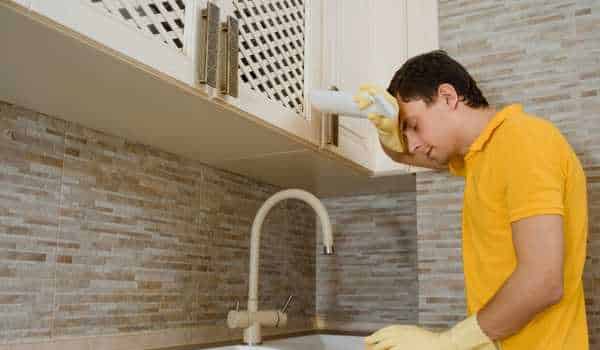
Keeping your kitchen clean is important to avoid the development of molds. Here are some tips for removing molds from kitchen cabinets:
- Wipe down cabinets and surfaces with a damp cloth or sponge. Make sure to get into all the nooks and crannies.
- If you see signs of molds, such as black spots or growths, take action immediately by cleaning the area with a bleach solution and water. Follow up with a professional cleaning service if necessary.
- Once the mold is removed, it’s important to dry the cabinet thoroughly before reinstalling any hardware or fixtures. This will help prevent future mold growth.
How to Prevent Mold in Cabinets
Molds can form in any area of the home where water has access, including in the kitchen cabinets. To prevent molds from growing in your cabinets, Follow these tips:
- Remove all food and any other debris that may have accumulated on the cabinet surfaces.
- Wipe down all surfaces with a dry cloth to remove any residual moisture.
- Protect the cabinet doors and surfaces with plastic wrap or a piece of foil if you will not be using them for an extended period of time.
- If you must clean the cabinet surface with a cleaning agent, use a mild one designed for wood or metal surfaces. Do not use harsh chemicals or cleaners that are intend for indoor plants or furniture.
The Final Thought
In conclusion, If you notice mold growing in your kitchen cabinets, There are a few simple steps you can take to remove it. Use a dilute bleach solution, A vacuum cleaner with a hose attachment, Or an over-the-counter scrubber to clean the molds off of the surfaces. Be sure to use caution and follow the instructions that come with the product you are using, In order to avoid any harmful effects.


